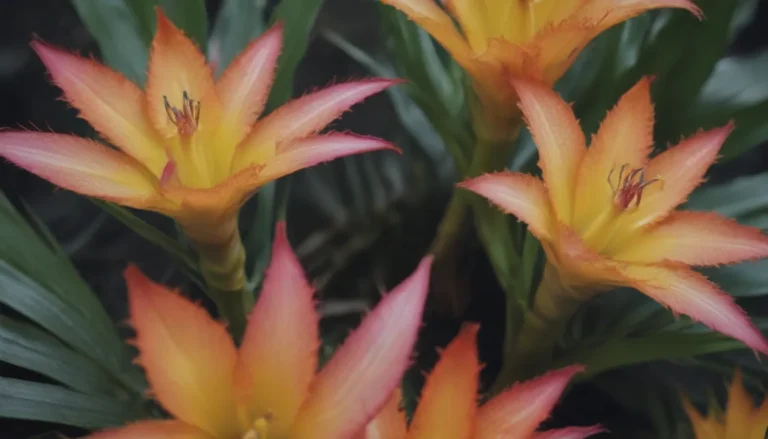A Complete Guide to Identifying and Managing Broccoli Pests

Broccoli is a popular vegetable known for its nutritional benefits, but it can be challenging to grow due to its susceptibility to various pests. If you’re encountering bugs on your broccoli plants, it’s essential to identify them correctly before taking any action. Different pests require different treatments, and understanding their life cycles can help you combat them effectively. In this comprehensive guide, we’ll delve into eleven common broccoli pests and provide tips on how to get rid of them.
Identifying and Managing Common Broccoli Pests
- Aphids
- Aphids are small insects that can attract ants to your broccoli plants. Look out for clear, sticky “honeydew” on the leaves, which indicates an infestation.
-
To get rid of aphids, you can wash them off with a strong blast of water or use insecticidal soap for more severe infestations.
-
Armyworms
- These pests move in groups and feed on the crowns of seedlings and leaves of plants.
-
Handpick small numbers of armyworms or use products containing Bacillus thuringiensis for serious infestations.
-
Cabbage Loopers
- Cabbage loopers are larvae that eat irregular holes in leaves. Look for 1.5-inch long, pale green larvae with thin white stripes.
-
Collect them in water or treat them with Neem oil to control the infestation.
-
Cabbage Root Maggots
- These pests feed below the soil, making them challenging to spot. Prevention is key, so avoid adding excess manure to the soil.
-
Plant strong, healthy seedlings instead of direct seeding to minimize the risk of infestation.
-
Cabbage Webworms
- Look out for yellowish-grey larvae that create webs and feed on the buds and growing tips of broccoli plants.
-
Treat the larvae with Bacillus thuringiensis but avoid repeated use to prevent resistance.
-
Cross-Striped Cabbageworms
-
These caterpillars create irregularly shaped holes in leaves. Use floating row covers to prevent egg-laying and handpick small numbers.
-
Diamondback Moth Caterpillars
- Identify the one-third inch long caterpillars with light-green color and tapered shape. Rainfall can help control the infestation.
-
Avoid using insecticides that the larvae may be resistant to.
-
Flea Beetles
- Adult flea beetles and larvae damage plants by chewing tiny holes in leaves. Use row covers to protect seedlings and try neem oil temporarily.
-
Flea beetles are highly mobile, so prevention is crucial to manage infestations.
-
Harlequin Bugs
-
Look out for shield-shaped insects with black and red, yellow, or orange markings. Handpick bugs off plants and do a thorough fall cleanup to disrupt the pest cycle.
-
Imported Cabbageworms
- Imported cabbageworm larvae are voracious feeders that can destroy broccoli plants if left unchecked.
- Natural enemies like shield bugs and vespid wasps can help control the infestation, but Bacillus thuringiensis may be necessary for severe cases.
-
Whiteflies
- Whiteflies weaken plants by sucking sap from leaves and stems. Control the infestation with sticky traps, insecticidal soap, and Neem oil.
- Act promptly to prevent severe damage to the plants.
Additional Tips for Managing Broccoli Pests
- Cultural Practices
-
Proper plant spacing, adequate watering, and regular inspection can help prevent pest infestations.
-
Natural Predators
-
Encourage beneficial insects like ladybugs and lacewings that feed on common broccoli pests.
-
Crop Rotation
-
Rotate your crops annually to reduce the build-up of pest populations in the soil.
-
Companion Planting
-
Planting companion plants like marigolds and basil can deter pests and attract beneficial insects.
-
Organic Remedies
- Consider using organic solutions like neem oil, insecticidal soap, and Bacillus thuringiensis to control pest infestations.
Conclusion
Growing broccoli can be a rewarding experience, but dealing with pests can be a challenge. By identifying common broccoli pests and understanding how to manage them effectively, you can protect your plants and ensure a successful harvest. Remember to practice proactive pest management strategies and monitor your plants regularly to prevent infestations. With the right knowledge and tools, you can enjoy healthy and thriving broccoli plants in your garden.
For more information on growing broccoli and managing pests, check out additional resources from reputable sources such as Colorado State University Extension and University of California. Happy gardening!





